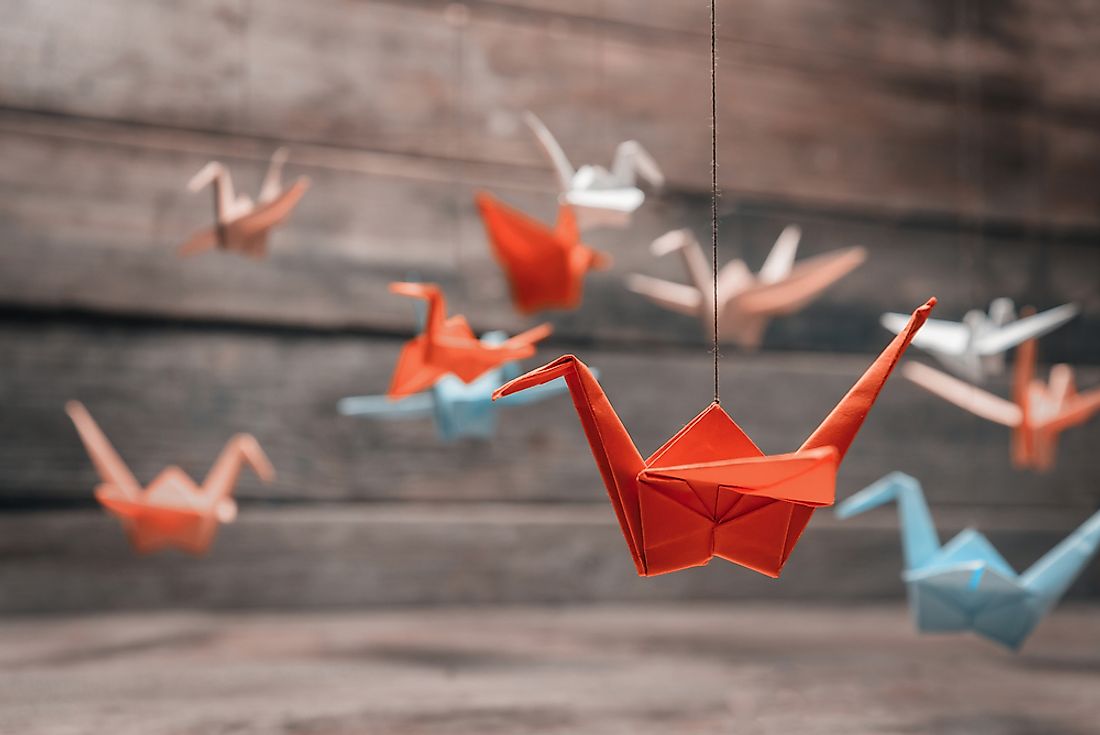What is Origami?

The word origami originates from two words ori meaning “folding” and kami meaning “paper.” From these two words, origami can be defined as the practice of folding paper. Origami is mostly associated with the Japanese culture, although its origins can also be traced to some parts of Europe and China. The traditional art of origami focuses on folding paper without modifying it in any way, either by cutting, taping, marking, or gluing. Although origami can take on many designs, the more popular model includes the Japanese paper crane.
History of Origami
Paper folding has well-documented origins in Europe, Japan, and China. Up until the 20th century, the origami styles differed greatly. Chinese traditions included the burning of folded paper, shaped like gold nuggets or “yuanbao” at their funerals. This practice is traceable all the way back to the Sung Dynasty. In Japan, folded paper designs were primarily used in Shinto rituals and ceremonies. Europe was a little bit different with paper folding having origins from folding napkins, which thrived during the 17th and 18th century. After this period, napkin folding declined, but the tradition lived on, for example in the “kindergarten” method by Friedrich Froebel.
Japan’s borders were opened in the 1860s in a bid to achieve modernization. The Japanese imported the kindergarten method of paper folding including some European practices such as removal of cutting. Eventually, these practices were integrated into the Japanese culture.
Types of Origami
Action Origami
This kind of origami is one that needs to be inflated to complete, can fly, or uses the energy from a person’s hand to do something like moving a limb or a flap. Action origami first emerged with a flapping bird from the Japanese.
Wet-folding
This class of technique is used to design origami with smooth edges as opposed to the sharp edges normally produced. To make sure that the edges are curved, the paper is dampened for easy shaping. However, the final shape keeps its shape after drying.
Modular Origami
This kind of origami consists of bringing together a number of similar pieces to make a finished design. The fragments are simple enough by themselves, but skill is required for assembly.
Pureland Origami
Only simple mountain folds or valley folds are used to make this type. Straightforward locations are a must-have for all the folds.
Kirigami
This term is used to describe origami designs that were made by cutting the piece of paper in ancient Japan. Modern origami innovation has greatly reduced this practice.
Origami Tessellations
This category of origami involves a group of outlines filling a plane without any overlaps or gaps. This class gained popularity after the year 2000.
Technical Origami
This classification of origami involves the creation of a model through engineering rather than trial and error method. Before folding, the shape of the final origami design is plotted on the paper. This kind allows the design and creation of tremendously intricate designs such as human-shaped models with all the outward organs clearly visible.











